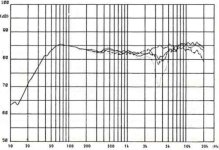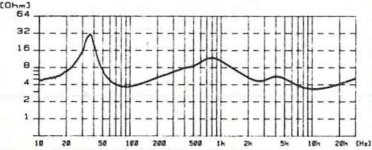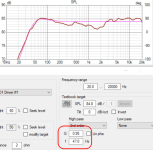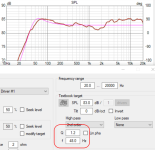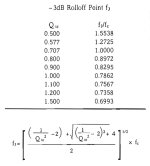Is there any formula to calculate the Qtc of the closed box from measurements? It’s likely reverse engineering work.
In the design process, I use a Qtc of 0.5 in the calculation. And finally, in the measurement, I got F3 = 28 Hz and Fb = 36 Hz, according to the impedance graph.
In the design process, I use a Qtc of 0.5 in the calculation. And finally, in the measurement, I got F3 = 28 Hz and Fb = 36 Hz, according to the impedance graph.
You want to use WinISD or simulator for box simulation. Dayton DATS or similar for the basic driver T/S parameters. However if you plan on keeping the woofer/box you have then it's all pretty irrelevant, relying instead on the microphone and impedance measurements as your only two useful guides.
Last edited:
Is there any formula to calculate the Qtc of the closed box from measurements? It’s likely reverse engineering work.
In the design process, I use a Qtc of 0.5 in the calculation. And finally, in the measurement, I got F3 = 28 Hz and Fb = 36 Hz, according to the impedance graph.
Oh, it's certainly possible... Sorry I have not my my books on hand now to search. 😕
With a QTC at 0.5 and those low F3 and FB frequencies, you indeed have a very large volume, I think... 😉
After a quick search, I have found this on the web :
https://audiojudgement.com/sealed-enclosure-closed-box/
T
My PC is broken. So I cannot show you the recent measurements. However, I have the previous measurements in which I’m not sure about the accuracy.Show us the measurement and we'll try...
Attachments
Is there any formula to calculate the Qtc of the closed box from measurements?
Search for "Measuring transducer Qms, Qes, Qts" and you will find a Wavecor pdf.
You will also need a tracing software to read out the Impedance values.
Re of the cabinet terminal is also needed. It will factor in any of the
resistance (LP inductor) in series with woofer.
Finally, I have found a hand calculation method from Dickason’s textbook. It provides a table showing the relationship between F3/Fc ratio and Qtc of the closed box system.
Consequently, my speaker’s F3/Fc ratio is 28/36 = 0.78. According to the table, it suggests the Qtc is 1.
So, is this method reliable?
Consequently, my speaker’s F3/Fc ratio is 28/36 = 0.78. According to the table, it suggests the Qtc is 1.
So, is this method reliable?
Attachments
It is reliable if the response you have is purely a second order rolloff.. no other resonances, room modes etc.
- Home
- Loudspeakers
- Multi-Way
- Finding Qtc of my speakers
